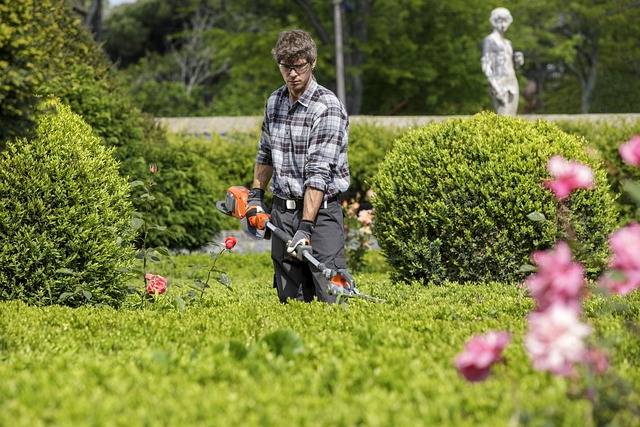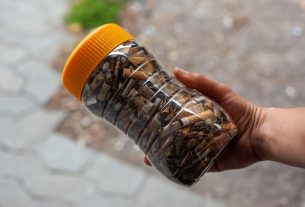Winter presents challenges for lawns in South Dakota due to cold temps, snow, and reduced sunlight, prompting dormant phases vulnerable to damage if not properly managed. Key steps include ending lawn care in early November, deep watering, insulating soil with organic mulch, removing leaves, fertilizing with a winterizer, aerating grass before frost, applying mulch, using winterizer fertilizers, conserving moisture through deep but less frequent watering, treating weeds/insects proactively, selecting cold-tolerant grass seeds, and safely removing snow to ensure lawn health and vibrancy come spring.
In South Dakota, winter presents unique challenges for lawn care enthusiasts. This article guides you through the complexities of maintaining a healthy lawn during the colder months. From understanding how winter affects grass to implementing effective winterization techniques, we explore essential practices to protect and nourish your lawn. Learn when to pause lawn care activities, discover watering strategies tailored for winter, and find solutions for managing weeds and insects in this climate. Additionally, we offer advice on choosing the right seeds and ensuring safe snow removal, culminating in tips for a vibrant spring re-growth.
- Understanding Winter's Impact on Lawns in South Dakota
- When to Stop Lawn Care for the Season
- Protecting Your Grass: Winterization Tips
- Preparing Your Lawn for Cold Weather
- Watering Strategies During Winter Months
- Handling Weeds and Insects in Cold Climate
- Choosing the Right Winter Grass Seeds
- Maintaining Snow Removal Safety on Lawns
- Spring Re-growth: Revitalizing Your Lawn After Winter
Understanding Winter's Impact on Lawns in South Dakota

Winter can be a challenging season for lawns in South Dakota, presenting unique challenges that require understanding and proactive care. The cold temperatures, snow accumulation, and reduced sunlight significantly affect grass growth and overall health. During this period, lawns enter a dormant phase, slowing down their metabolic processes to conserve energy. While this adaptation helps them survive the harsh conditions, it also makes them more susceptible to damage if not properly managed.
South Dakota’s winters are characterized by fluctuating temperatures, with frequent cold snaps and sudden warm spells. These dramatic changes can cause stress to the lawn, leading to issues like winter burn (a browning of grass) or weakened root systems. Additionally, snow cover, though protective, can restrict oxygen exchange in the soil, further impacting lawn health. Understanding these factors is crucial for homeowners to implement effective winter care practices and ensure their lawns thrive once spring arrives.
When to Stop Lawn Care for the Season

In South Dakota’s winter, it’s crucial to know when to call time on lawn care activities. Generally, early November is considered the ideal period to stop mowing and prepare your lawn for the colder months. This timing allows grass to naturally go dormant, ensuring better survival during the harsh winters.
Before stopping, ensure you’ve taken care of any remaining tasks like raking up fallen leaves, removing dead vegetation, and applying a final round of fertilizer to nourish the soil. These steps will help maintain your lawn’s health and encourage stronger growth when spring arrives.
Protecting Your Grass: Winterization Tips

Winter can be a challenging season for maintaining a lush lawn, but with proper winterization, South Dakota residents can protect their grass and ensure a vibrant springtime comeback. One crucial step is to ensure adequate water absorption before the ground freezes. Regular deep watering during fall months helps in strengthening roots, making them better equipped to withstand cold temperatures. Applying a layer of organic mulch around the lawn can also insulate the soil, maintaining consistent moisture levels and preventing excessive evaporation.
Additionally, removing fallen leaves and debris is essential. These materials can smother grass, restricting oxygen flow and promoting root rot. Consider using a leaf blower or rake to clear these obstructions, allowing sunlight and air to reach the grass. Fertilization is another vital winterization technique; applying a winterizer fertilizer in late fall can provide the necessary nutrients for grass growth during dormancy, ensuring a healthier lawn come spring.
Preparing Your Lawn for Cold Weather

Preparing your lawn for cold weather in South Dakota involves a few key steps to ensure it survives the winter months healthy and vibrant. One of the most important is to aerate your grass before the first frost. This process, which punctures small holes in the soil, allows air, water, and nutrients to reach the roots more effectively. It also helps reduce thatch buildup, a layer of dead organic material that can stifle growth.
Additionally, applying a thick layer of organic mulch, such as wood chips or straw, around the base of your grass can provide an extra layer of insulation against extreme cold temperatures. This protects the root system and conserves moisture during dry winter conditions. Consider using a winterizer fertilizer in late autumn to strengthen grass against cold weather and help it recover come spring.
Watering Strategies During Winter Months

In South Dakota’s winter, watering strategies for lawns must adapt to the cold temperatures and reduced evapotranspiration rates. One effective method is to water deeply but less frequently to encourage deep root growth. This is because the soil stays relatively moist, allowing roots to access water throughout the season, even when the top layer appears dry. A good rule of thumb is to water thoroughly, ensuring the water reaches the root zone, approximately 2-3 inches below the surface, every 7-10 days, depending on temperature and wind conditions.
Avoid overwatering during winter months, as it can lead to poor grass health by promoting fungal growth and root rot. Consider using a rain gauge to monitor moisture levels and adjust watering schedules accordingly. Additionally, covering newly seeded or vulnerable areas with insulation materials like straw or fabric can protect the soil from extreme cold and frost, preserving moisture and fostering healthier grass growth come spring.
Handling Weeds and Insects in Cold Climate

In South Dakota’s cold climate, weeds and insects can pose unique challenges during winter. While many plants and pests hibernate or become dormant, some weeds and insect larvae survive the cold months, waiting for spring to return. To manage these pests effectively, lawn care professionals recommend a proactive approach. This involves identifying and treating any active weeds or insects before they have a chance to proliferate in the coming season.
Applying targeted herbicides and insecticides during late fall or early winter can be highly effective. Cooler temperatures mean fewer pest populations are present, making treatment more precise and minimizing environmental impact. Additionally, proper disposal methods should be employed for any unused chemicals to protect local ecosystems from potential contamination.
Choosing the Right Winter Grass Seeds

When preparing your lawn for winter in South Dakota, selecting the appropriate winter grass seeds is a key step. The state’s cold winters and variable spring conditions call for hardy, cold-tolerant grasses that can withstand temperatures below freezing. Types like Kentucky Bluegrass, Perennial Ryegrass, and Fescues are popular choices due to their ability to thrive during both cool seasons and summers.
Consider factors like your lawn’s sun exposure, soil type, and traffic levels when making your selection. For areas with heavy foot traffic, choose seeds that offer good wear resistance. Additionally, mixing different grass types can create a more robust and diverse lawn, enhancing its overall health and resilience against winter stress.
Maintaining Snow Removal Safety on Lawns

Keeping your lawn safe and well-maintained during winter in South Dakota requires a thoughtful approach to snow removal. While removing snow is essential for accessibility, it’s crucial to be mindful of potential hazards. Using appropriate tools like shovels designed for heavy snow or snow blowers with safety features can prevent injuries.
Always prioritize your safety by wearing warm clothing and taking breaks when needed. Be cautious of icy patches that might form after melting snow, and remember to keep walkways clear of debris to avoid tripping hazards. Additionally, consider the health of your lawn; excessive shoveling or blowing can stress the turf, so aim for a balanced approach that keeps both your safety and lawn health in mind.
Spring Re-growth: Revitalizing Your Lawn After Winter

After a long winter, your lawn is ready to spring back to life. The first signs of re-growth typically appear in early to mid-March, depending on the specific grass species and weather conditions. To encourage healthy growth, start by removing any remaining snow and debris from your lawn. Once the soil is accessible, aerate your lawn to reduce compaction and improve water penetration. Applying a balanced fertilizer can also help stimulate new growth and ensure your lawn has the necessary nutrients for a vibrant spring.
As temperatures rise, make sure to mow regularly, removing no more than one-third of the grass blade at a time. This promotes strong root development and helps prevent weeds from taking over. By maintaining a consistent mowing schedule and providing proper care, your lawn will be well on its way to looking lush and green once again.
In South Dakota’s unique winter landscape, proper lawn care ensures your grass thrives when spring arrives. By understanding the specific challenges and implementing tailored strategies from preparing for cold weather to choosing suitable seeds, you can protect and enhance your lawn. These tips empower folks to navigate the seasonal shift, ensuring their lawns remain healthy and vibrant until warmer days return.

